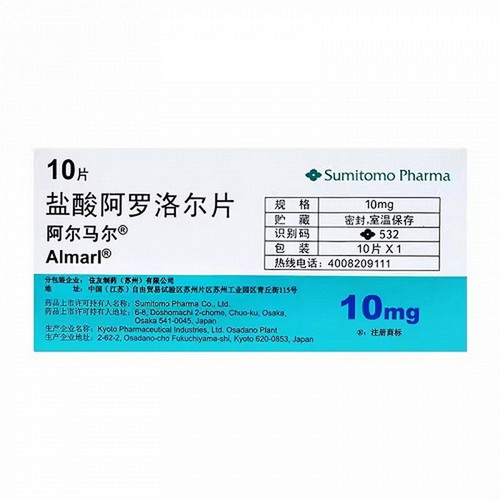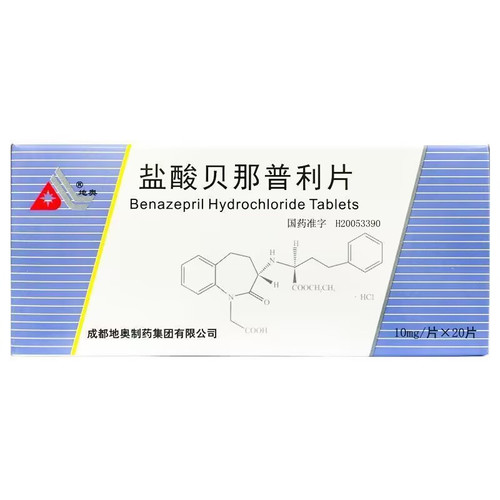Product Overview
Trade name:
BANGE
English name:
Vardenafil Hydrochloride Tablets
Indications:
Treatment of male erectile dysfunction.
Dosage and Administration:
Dosage: Oral recommended dose: The recommended starting dose is 10 mg, taken approximately 25 to 60 minutes before sexual intercourse. In clinical trials, it was still effective when taken 4 to 5 hours before sexual intercourse. The maximum recommended dose is once a day. Vardenafil can be taken with or without food. Sexual stimulation is required as an instinctive response for treatment. Dose range: Depending on efficacy and tolerability, the dose can be increased to 20 mg or reduced to 5 mg. The maximum recommended dose is 20 mg per day. Hepatic impairment: No dose adjustment is required for patients with mild hepatic impairment (Child-Pugh A); for patients with moderate hepatic impairment (Child-Pugh B), due to the reduced clearance of vardenafil, the recommended starting dose is 5 mg, which is then gradually increased to 10 mg based on tolerability and efficacy; pharmacokinetic studies of vardenafil in patients with severe hepatic impairment (Child-Pugh C) have not yet been conducted. Renal impairment: No dose adjustment is required for patients with mild, moderate or severe renal impairment. The pharmacokinetics of vardenafil in dialysis patients have not been studied.
Concomitant use: Concomitant use of vardenafil and alpha-blockers may cause symptomatic hypotension in some patients. Concomitant use of these drugs should only be used when the patient is stable on alpha-blocker therapy. For patients who are stable on alpha-blocker therapy, the dose of vardenafil should be the lowest recommended starting dose of 5 mg, and tamsulosin can be taken at any time. When vardenafil is co-administered with other alpha-blockers, there should be a certain interval between doses. For patients who are already taking the optimal dose of vardenafil, the use of alpha-blockers should be started at the lowest dose.
For patients taking PDE5 inhibitors (including vardenafil), an increase in the dose of alpha-blockers may cause a further decrease in blood pressure. Patients taking certain CYP3A4 inhibitors may need to adjust the dose of vardenafil (e.g., ketoconazole, itraconazole, ritonavir, indinavir, and erythromycin). When taking erythromycin at the same time, the maximum dose of vardenafil should not exceed 5 mg. When taking ketoconazole or itraconazole, the maximum dose of vardenafil should not exceed 5 mg. When the dose of ketoconazole or itraconazole exceeds 200 mg, vardenafil should not be taken. Avoid taking the strong CYP3A4 inhibitors indinavir and ritonavir at the same time.
Adverse reactions:
All clinical trials (adverse reactions)
The following table summarizes the frequency of ADRs reported in the use of Levitra. Within each frequency group, adverse reactions are listed in descending order of severity. These frequencies are defined as very common (≥1/10), common (≥1/100 to <1/10),
Uncommon (≥1/1,000 to <1/100), rare (≥1/10,000 to <1/1,000), and very rare (<
1/10,000).
Adverse reactions that were only found in post-marketing surveillance and whose frequency could not be estimated are listed under "Unknown".
In all clinical trials worldwide, adverse drug reactions reported in patients, including those that occurred in 20.1% of patients, were reported as drug-related adverse reactions or rare but considered serious adverse reactions.
Post-marketing:
Myocardial infarction (MI): Myocardial infarction (MI) has been reported during sexual activity while taking vardenafil, but it could not be determined whether the MI was directly related to vardenafil, sexual activity, the patient's underlying cardiovascular disease, or a combination of these factors.
Non-arteritic anterior ischemic optic neuropathy: After the introduction of PDE5 inhibitors (including Levitra), a very small number of patients have been reported to have non-arteritic anterior ischemic optic neuropathy (NAION) that may be associated with it, which can lead to decreased vision or even permanent blindness. Most, but not all, of these patients have anatomical or vascular risk factors that predispose them to NAION, including: small cup-to-disc ratio (small optic disc), age over 50 years, diabetes, hypertension, coronary heart disease, hyperlipidemia, and smoking. It is not yet clear whether the above events are directly related to the use of PDE5 inhibitors or the patient's underlying vascular risk factors or anatomical defects, or the combined effects of these factors, or other factors.
Visual impairment: After the PDE5 inhibitors (including Levitra) were put on the market, there were reports of a very small number of patients experiencing visual impairment that may be related to them, including blindness (temporary or permanent)? Whether these events are directly related to the use of PDE5 inhibitors, the patient's potential vascular risk factors or anatomical defects, or the combined effect of these factors, or other factors is still unknown. Sudden deafness or hearing loss: After the PDE5 inhibitors (including Levitra) were put on the market and in clinical trials, there were reports of a small number of patients experiencing sudden deafness or hearing loss. Whether these events are directly related to the use of Levitra, the patient's potential risk factors for hearing loss, or the combined effect of these factors, or other factors is still unknown.
Contraindications: Patients with hypersensitivity to any component of the drug (active or excipient) are contraindicated. PDE5 inhibitors may enhance the hypotensive effect of nitrates, similar to the mechanism of action of PDE inhibitors in the NO/cGMP pathway. Therefore, patients taking nitrates or nitric oxide donors are contraindicated to use vardenafil at the same time. (See "Drug Interactions") Concomitant use with the HIV protein kinase inhibitors indinavir or ritonavir and vardenafil is contraindicated because they are strong CYP3A4 inhibitors. (See "Dosage and Administration" and "Drug Interactions") Vardenafil is contraindicated in patients with vision loss due to non-arteritic anterior ischemic optic neuropathy (NAION), regardless of whether the symptoms are related to previous exposure to alkaline phosphatase 5 (PDE5) inhibitors. Drugs for erectile dysfunction are generally not used in men who are not suitable for sexual activity (such as patients with severe cardiovascular dysfunction: such as unstable angina or severe heart failure). The safety of vardenafil has not been studied in the following patients. Unless further information is available, vardenafil is contraindicated in:? Patients with severe hepatic impairment (Child-Pugh O),? End-stage renal disease requiring dialysis,? Hypotension (blood pressure <90/50 mmHg),? Recent history of stroke or myocardial infarction (within 6 months),? Unstable angina, familial degenerative eye diseases such as pigmentary retinitis. For patients over 75 years old, the concomitant use of strong P450 (CYP) 3A4 inhibitors (ketoconazole and itraconazole (oral formulation) is prohibited. PDE-5 inhibitors, including vardenafil, are prohibited from being used in combination with guanylate cyclase stimulators (such as riociguat) because of the possibility of symptomatic hypotension.
Precautions:
Because sexual activity is associated with a degree of cardiac risk, physicians should consider the patient's cardiovascular status before initiating any treatment for erectile dysfunction. The vasodilator properties of vardenafil may cause a temporary, mild decrease in blood pressure. Patients with left ventricular outflow obstruction, such as aortic stenosis and idiopathic hypertrophic subaortic stenosis, may be sensitive to vasodilators, including PDE5 inhibitors. Medications for erectile dysfunction are generally not used in patients with underlying cardiovascular problems who are not recommended for sexual intercourse.A study on the effect of vardenafil on the QT interval in 59 healthy male subjects showed that therapeutic doses (10 mg) and superdose (80 mg) of vardenafil caused a prolongation of the QTc interval. A post-marketing study showed that when vardenafil was used in combination with another drug that affects the QT interval, the effect on the QT interval was cumulative compared to the use of each drug alone (see "Pharmacological Actions"). Therefore, this should be taken into consideration when using vardenafil clinically in patients with a history of QT prolongation or taking drugs that prolong the QT interval. Patients with congenitally prolonged QT intervals or patients taking Class IA (such as quinidine, procainamide) or Class III (such as amiodarone, sotalol) antiarrhythmic drugs should avoid taking vardenafil.Caution should be used when treating erectile dysfunction in patients with anatomic malformations of the penis (e.g., angulation, cavernous fibrosis, Peyronie's disease), or in patients with persistent erections (e.g., sickle cell disease, multiple myeloma, and leukemia). The safety and efficacy of vardenafil in combination with other treatments for erectile dysfunction have not been studied, and therefore, it is not recommended. The safety of vardenafil has not been studied, and therefore, it is not recommended in patients with the following conditions: severe hepatic impairment, end-stage renal disease requiring dialysis, hypotension (resting systolic blood pressure < 90 mmHg), recent stroke or myocardial infarction (within 6 months), unstable angina, and a family history of degenerative eye diseases such as retinitis pigmentosa. Transient blindness and nonarteritic anterior ischemic optic neuropathy (NAION) have been reported in association with the use of PDE5 inhibitors, including Levitra.Patients should be advised to stop taking Cialis® in the event of sudden blindness and seek medical attention immediately. (See "Adverse Reactions"). The combined use of moderate or strong CYP3A4 inhibitors such as ketoconazole, itraconazole, erythromycin, clarithromycin, vandenavir, and ritonavir will significantly increase the blood concentration of vardenafil. When ketoconazole and itraconazole are used at the same time, the maximum dose of vardenafil should not exceed 5 mg. In addition, vardenafil is prohibited when the dosage of ketoconazole and itraconazole exceeds 200 mg (see "Dosage and Administration" and "Drug Interactions").When erythromycin or clarithromycin is used simultaneously, the maximum dose of vardenafil should not exceed 5 mg. It is prohibited to take vardenafil simultaneously with the super-potent CYP3A4 inhibitors indinavir and ritonavir. (See "Dosage and Administration", "Contraindications" and "Drug Interactions"). Co-administration of the drug is only possible when the patient is receiving α-blocker treatment and the condition is stable (see "Drug Interactions"). For patients who are receiving α-blocker treatment and the condition is stable, the dose of vardenafil should be the minimum recommended starting dose of 5 mg. Vardenafil and tamsulosin or alfuzosin can be taken at any time. When vardenafil is used in combination with other α-blockers, there should be a certain interval between medications (see "Drug Interactions").For patients already taking the optimal dose of vardenafil, alpha-blockers should be started at the lowest dose. For patients taking PDE5 inhibitors, including vardenafil, a gradual increase in the dose of alpha-blockers may cause a further decrease in blood pressure. Vardenafil is not used in patients with bleeding disorders or active peptic ulcer disease and should only be used after a careful benefit-risk assessment. Vardenafil has no effect on bleeding time when used alone or in combination with aspirin. In vitro studies with human platelets have shown that vardenafil alone does not inhibit platelet aggregation induced by multiple platelet factors. In overdose therapy, vardenafil was observed to slightly enhance the anticoagulant effect of sodium nitroprusside, a nitric oxide donor, in a concentration-dependent manner. The combination of vardenafil and heparin has no effect on bleeding time in rats, but the interaction has not been studied in humans. Ability to drive and operate machinery: Before driving or operating machinery, patients should consider their reaction to vardenafil.
Storage:
Store in a sealed container below 25°C. Keep out of reach of children.
Expiration date:
36 months







